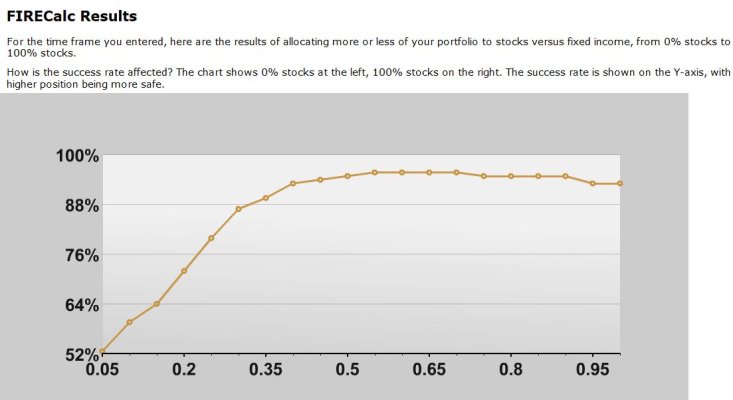With things looking like they may get worse based on today's FOMC press conference comments, I decided to look at things based on allocating four year's worth of expenses into a "cash reserve" bucket.
What I was trying to come to grip with was a realistic view of how much "dry powder" I had on hand to deploy if the market takes a large dip from here. I think that lumping all my cash together was giving an unrealistic view since I could not deploy it all unless I was willing to sell equities to fund living expenses.
Thinking as I type, I probably should also include projected taxes on ROTH conversions as cutting into my "dry powder" stash.
So, basically, I took my total portfolio value and subtracted the four years of expenses to give my "investable portfolio". When I calculate things like my percentage of equities, it would be percentage of the investable portfolio.
Thinking about it this way, my current 30% equities looks more like 35% and my huge pile of dry powder cash is quite a bit less than I had been picturing it as.
Do you think this way of looking at things makes sense?
What I was trying to come to grip with was a realistic view of how much "dry powder" I had on hand to deploy if the market takes a large dip from here. I think that lumping all my cash together was giving an unrealistic view since I could not deploy it all unless I was willing to sell equities to fund living expenses.
Thinking as I type, I probably should also include projected taxes on ROTH conversions as cutting into my "dry powder" stash.
So, basically, I took my total portfolio value and subtracted the four years of expenses to give my "investable portfolio". When I calculate things like my percentage of equities, it would be percentage of the investable portfolio.
Thinking about it this way, my current 30% equities looks more like 35% and my huge pile of dry powder cash is quite a bit less than I had been picturing it as.
Do you think this way of looking at things makes sense?

